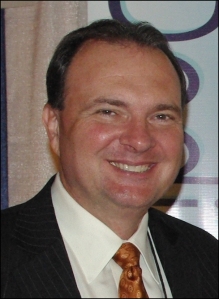Dr. Matwick Scheduled to Speak at State of Schools Luncheon
Written by: Dr. Mike Matwick
For the third consecutive year, I’ve been asked to participate in the Tempe Chamber of Commerce, State of the Schools luncheon. The luncheon is a networking and informational forum for key political and business leaders in the City of Tempe. Fellow representatives on the panel include the superintendents of the Tempe Union High School District, Kyrene Elementary District, Tempe Elementary District, Arizona State University, and Rio Salado Community College.
The focus of this year’s luncheon is how the current budget crisis in Arizona, and national economic concerns are impacting education in Arizona. Part of the response to this question is focused on the current status of legislation that will directly impact funding to online programs. Specifically, the legislation that is before the governor for consideration will decrease funding to online schools by 5%, on the based funding level, and require students to complete 1,080 hours in the online program to count as a full funding share to the school. This is a dramatic shift, in that the funding rate was based on 400 hours equaling a full funding share in 2008-09! This means that the hourly funding rate per pupil has been cut from $14.43 to $5.56 per hour of student engagement.
The premise behind the budget cuts is that online programs don’t have to maintain “physical facilities” to support their operations. To a certain extent, this is true. Online programs don’t house students, physically in classrooms, but what we do house is a 15,000 square foot operations center for teachers and support staff, redundant hosting facilities to ensure student access and availability to systems, and extensive internet infrastructure and connectivity to support effective online learning. The belief that online programs are cheaper to operate is a fallacy. The reality is that online programs provide a high quality experience for learners, but do so in a different method, with different tool. The expenses are not allocated to “traditional” expenditures, but are allocated in ways that aren’t as tangible as a bricks and mortar building.
From the a recent New York Times article, research has been presented that indicates that online learners exceed the academic growth of their peers. In the book, Disrupting Class, the author indicates that within the next ten years, high school students taking online classes in some form will grow from the current 3% to over 80% of all students in high school taking some form of online class. Let’s encourage our legislators, business and community leaders to properly fund education in Arizona, with a focus on what works for students.






